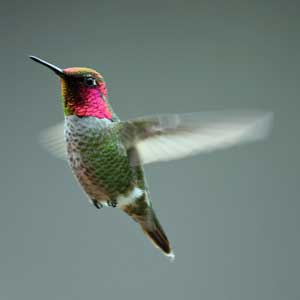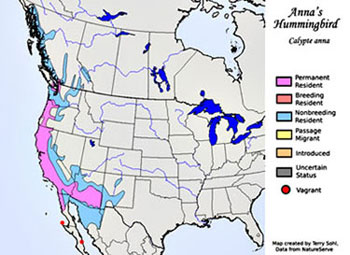JULY 14, 2011
Rep. Schweikert to accept fall internship applications
SCOTTSDALE – Congressman David Schweikert (R-AZ) today announced openings for full-time, unpaid fall internships in his Washington D.C. office: Congressman Schweikert and his staff are seeking full-time internship applicants for the 2011 fall term (September- December) in Washington, D.C.
The ideal candidate will be motivated, detail oriented, able to multi-task, possess excellent communication skills and interact well with constituents.
Responsibilities include answering the phone, giving tours of the Capitol and assisting with constituent correspondence.
Arizona ties are preferred, but not required. Interested candidates should e-mail a cover letter and resume to [email protected] with “Fall Internship Applicant” in the subject line as well as a preference for either a “press” or “policy” focused internship. Applications are due by August 12, 2011.
BY JANET LAW | JULY 13, 2011
 Brave Heart
Brave Heart
The remarkable hummingbird
It was mid-March as I peered out the den window to admire the Texas Mountain Laurel in full bloom. Amid the lilac-like blossoms of the small tree, I spied a pair of cardinals sitting, then fluttering in the branches, and I mused to myself, “How wonderful - perhaps they are contemplating a place to nest!” Suddenly, I noticed the tiniest of birds circling the twosome, darting in and out of the branches adjacent to the cardinals and even hovering right in front of the larger birds. The little creature moved aggressively closer and closer to them, darting backwards and forward. I ran for the binoculars, and upon my return watched two intimidated cardinals fly off and a very self-assured hummingbird fly into a 1x2-inch cup made of plant material and bound together with spider webs, camouflaged on the outside with bits of bark and dead leaves, all attached to a horizontal branch of the Laurel.
My interest was piqued. I moved outside and the little bird let me come relatively close to her nest as she stared me right in the eye. Of the 17 species of hummingbird found in North America, I had to know which one was nesting in my patio. I noted her greenish upper part, the tiny square of red on her throat, an underside which appeared to be a mottled gray and the tail feathers which were tipped with white. Upon research, I found that my Audubon Birds of North America listed only three hummingbirds and none fit the description of my visitor. It was time to turn on the remarkable PC! Soon I located the following information from Ocean Oasis Field Guide (San Diego Natural History Museum) and the Cornell Lab of Ornithology.
 I read that Anna’s Hummingbird (Calypte anna) fit the description and that its body length is approximately 100 mm and its weight is measured in grams. The male’s markings are similar to the female’s except for a deep rose-red crown and gorget (throat) that extends to the sides of the neck. Anna’s Hummingbirds have an unusually early breeding season which begins in December and lasts until May or June. Males arrive first and begin defending territories associated with rich and dependable food sources. Females arrive a few weeks later and establish separate territories. When the nest is partially built by the female, the male performs his courtship display. First he hovers before the female, then rises high, sometimes pausing to send a thin, squeaky warble of a song before diving toward her on a U-shaped trajectory, and at the bottom of the dive utters a loud, explosive noise. He will continue this shuttle dance until the female agrees to mate.
I read that Anna’s Hummingbird (Calypte anna) fit the description and that its body length is approximately 100 mm and its weight is measured in grams. The male’s markings are similar to the female’s except for a deep rose-red crown and gorget (throat) that extends to the sides of the neck. Anna’s Hummingbirds have an unusually early breeding season which begins in December and lasts until May or June. Males arrive first and begin defending territories associated with rich and dependable food sources. Females arrive a few weeks later and establish separate territories. When the nest is partially built by the female, the male performs his courtship display. First he hovers before the female, then rises high, sometimes pausing to send a thin, squeaky warble of a song before diving toward her on a U-shaped trajectory, and at the bottom of the dive utters a loud, explosive noise. He will continue this shuttle dance until the female agrees to mate.
Back in the patio, I noted that the male took no interest in the nest or in the care and feeding of the babies. The clutch consisted of two white eggs each resembling a “Jelly Belly.” Incubation of the eggs took about two weeks before the naked and blind nestlings hatched. My two looked like a pair of worms! After another three weeks, the fully grown young left the nest but remained dependent on the mother for food for a few days. My sources said that juveniles rapidly develop territorial behavior, sometimes establishing their own feeding territories shortly after leaving the nest.
Hummers have a fast breathing rate and heartbeat, and a high body temperature. They must feed every 10 minutes or so all day, and they may consume two-thirds of their body weight in a single day! A major part of an Anna’s diet is sugar. They get it from flower nectar and tree sap. Hummers
also need protein in order to build muscles and the Anna’s Hummingbird consumes more insects than any other North American hummingbird by catching small flying insects or pilfering them from the webs of spiders.
Hummingbirds can fly not only forward but also right, left, up, down, backwards, even upside-down. While other birds get their flight power from the downstroke only, hummers have strength on the upstroke as well. They flap their wings in a figure eight at about 50 or so times a second. During courtship, their wings may move as much as 200 beats per second. Their tiny feet are almost useless except for perching; if they want to travel two inches, they must fly!
Hummers preen themselves with their bills and claws, using oil from a gland near the tail. They often groom their heads and necks with their feet, using
their claws like a comb. Hummingbirds like to bathe in a cupped leaf or shallow pool; they also sunbathe. They sleep with neck retracted and head forward, the bill pointed up at a sharp angle, and the feathers fluffed.
 Anna’s Hummingbirds were originally found only along the Pacific slope from Baja, California, to San Francisco, but in recent years have been found as far north as the southeast coast of Alaska and east to Arizona and southwest New Mexico. The Anna’s Hummingbird is the only hummer with a winter range primarily in the United States.
Anna’s Hummingbirds were originally found only along the Pacific slope from Baja, California, to San Francisco, but in recent years have been found as far north as the southeast coast of Alaska and east to Arizona and southwest New Mexico. The Anna’s Hummingbird is the only hummer with a winter range primarily in the United States.
Hummers have a life span of about four years. They are known for their excellent memories and can remember food sources from the previous year. As they feed, they accidentally collect pollen as they move from blossom to
blossom and so help flowers to reproduce. An Anna may even return to the same tree and identical branch the following year to build its nest. You can be sure I’ll be watching out the den window from December to early spring for the return of my “Jewel of Flight.”




